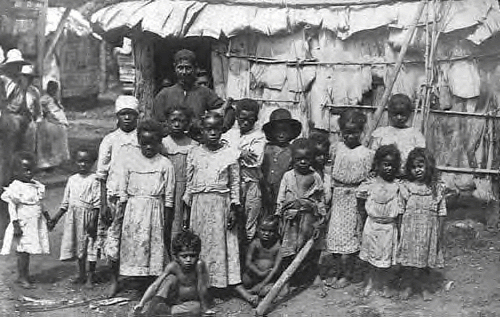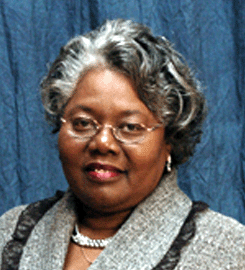


Juneteenth celebrations strive to acknowledge the wrongs that were committed and help to raise the descendents up by concentrating on education and personal achievements. If you’ve never heard of Juneteenth, learn a little about the history and consider joining people all over the country as they celebrate this important holiday in June.
Juneteenth is sometimes called Freedom Day or Emancipation Day. This holiday honors African American heritage, and it commemorates the announcement of the abolition of slavery in Texas on June 19, 1865. It is celebrated by more than just Texas—36 states call it a state holiday.
- See more at: http://every-day-is-special.blogspot.com/
2010_06_01_archive.html#sthash.0cvgI3Oz.dpuf
By Kat DeLong
Published May 20, 2008
Juneteenth History







HISTORY
Juneteenth, also known as Juneteenth Independence Day or Freedom Day, is a holiday that commemorates the announcement of the abolition of slavery in Texas in June 1865, and more generally the emancipation of African-American slaves throughout the Confederate South. Celebrated on June 19, the term is a portmanteau of June and nineteenth and is recognized as a state holiday or special day of observance in most states.
The holiday is observed primarily in local celebrations. Traditions include public readings of the Emancipation Proclamation, singing traditional songs such as "Swing Low, Sweet Chariot" and "Lift Every Voice and Sing", and readings by noted African-American writers such as Ralph Ellison and Maya Angelou. Celebrations may include parades, rodeos, street fairs, cookouts, family reunions, park parties, historical reenactments, or Miss Juneteenth contests.
During the American Civil War, President Abraham Lincoln issued the Emancipation Proclamation on September 22, 1862, with an effective date of January 1, 1863. It declared all slaves to be freed in the Confederate States of America in rebellion and not in Union hands (this excluded Maryland, Delaware, Tennessee, "West" and Southeast Virginia and lower Louisiana, which were occupied by the Union). It also announced that the Union would start recruiting former slaves and free blacks to serve in the military and recruitment began in the spring of 1863. Slaves often escaped to Union lines for protection and many began to serve in the military. In some areas, contraband camps were set up to house the freedmen temporarily, as well as start schools and put adults to work. Lincoln had urged the governments in the Border States, which had remained in the Union, to free their slaves under a system of gradual abolition but none did so. Those slaves were not emancipated until the end of the war.
Even when slaves gained freedom, this was a difficult era. Conditions in contraband camps were crowded, with poor sanitation, as existed in most military encampments. Just as more soldiers on both sides died of disease rather than wounds, because of the social disruption from the war and general harsh conditions, many former slaves died of disease in the years from 1862 to 1870, including from a smallpox epidemic.[5]
More isolated geographically, Texas was not a battleground, and thus its slaves were not affected by the Emancipation Proclamation unless they escaped. Planters and other slaveholders had migrated into Texas from eastern states to escape the fighting, and many brought their slaves with them, increasing by the thousands the number of slaves in the state at the end of the Civil War.
By 1865, there were an estimated 250,000 slaves in Texas. As news of end of the war moved slowly, it did not reach Texas until May 1865, and the Army of the Trans-Mississippi did not surrender until June 2nd. On June 18, 1865, Union General Gordon Granger arrived at Galveston Island with 2,000 federal troops to occupy Texas on behalf of the federal government. On June 19, standing on the balcony of Galveston's Ashton Villa, Granger read aloud the contents of "General Order No. 3", announcing the total emancipation of slaves:The people of Texas are informed that, in accordance with a proclamation from the Executive of the United States, all slaves are free. This involves an absolute equality of personal rights and rights of property between former masters and slaves, and the connection heretofore existing between them becomes that between employer and hired labor. The freedmen are advised to remain quietly at their present homes and work for wages. They are informed that they will not be allowed to collect at military posts and that they will not be supported in idleness either there or elsewhere.






A Glance into the history of the countless struggles fought for freedom for all people.
The Road to Emancipation

Dred Scott was a slave who unsuccessfully sued for his freedom, his wife and their two daughters freedom in the Dred Scott v. Sandford case of 1857. The case was based on the fact that although he and his wife Harriet Scott were slaves, they had lived with his master, Dr. John Emerson, in states and territories where slavery was illegal according to both state laws and the Northwest Ordinance of 1787, including Illinois and Minnesota (which was then part of the Wisconsin Territory). The United States Supreme Court decided 7–2 against Scott, finding that neither he nor any other person of African ancestry could claim citizenship in the United States, and therefore Scott could not bring suit in federal court under diversity of citizenship rules. Moreover, Scott's temporary residence outside Missouri did not bring about his emancipation under the Missouri Compromise, which the court ruled unconstitutional as it would improperly deprive Scott's owner of his legal property. — with George Ward Beacham III
Abolition penny token.The caption on the token reads AM I NOT A MAN AND A BROTHER? The figure on this token is the image of a kneeling black slave used by anti-slavery campaigners, or Abolitionists, as their logo. The kneeling slave is asking for help from his white brothers. This image was widely used to raise support and awareness for the campaign, it appears on many items, from pamphlets through to china plates.The enslaved Africans were not as passive in their role as this symbol suggests, their continual fight against slavery was the main contributing factor to its abolition.
Date: c. 1800sCopyright: Copyright BCC MuseumObject ID:Bowles Coll 234


Rafael Cordero (1790–1868), was a freeman born in San Juan, Puerto Rico. He became known as "The Father of Public Education in Puerto Rico". Cordero was a self-educated Puerto Rican who provided free schooling to children regardless of their race. Among the distinguished alumni who attended Cordero's school were future abolitionists Román Baldorioty de Castro, Alejandro Tapia y Rivera, and José Julián Acosta. Cordero proved that racial and economic integration could be possible and accepted in Puerto Rico. In 2004, the Roman Catholic Church, upon the request of San Juan Archbishop Roberto González Nieves, began the process of Cordero's beatification.[18] He was not the only one in his family to become an educator. In 1820, his older sister, Celestina Cordero, established the first school for girls in San Juan.
The Royal Decree of Graces of 1789, which set the rules pertaining to the Slaves in Puerto Rico and the CaribbeanAfter 1784, the method of hot branding the slave's forehead was suspended. They were permitted to obtain their freedom under the following circumstances:A slave could be freed in a church or outside of it, before a judge, by testament or letter in the presence of his master.A slave could be freed against his master's will by denouncing a forced rape, by denouncing a counterfeiter, by discovering disloyalty against the king, and by denouncing murder against his master.Any slave who received part of his master's estate in his master's will automatically became free. If a slave was made a guardian to his master's children, he also was freed.If slave parents in Hispanic America had ten children, the whole family went free.
Puerto Rico-Royal Decree of Graces of 1789
SIGNATURE
CHANGED THE COUNTRY
THIS


Depriving the Confederacy of Slave Labor
The Confederate states were dependent on their agrarian economy to produce food and support the war effort. Lincoln's proclamation encouraged the slaves to leave the farms and deprived the Confederates of a badly needed source of labor. Without a slave labor base, the Confederacy's war support efforts were diminished.Foreign PolicyThe proclamation complicated the Confederacy's efforts to win alliances with the European nations of Great Britain and France. President Lincoln's action demonstrated a clear moral divide between the polices of the North and South. This made it difficult for the leaders of the European nations to justify intervention on behalf of the Confederacy because many were already opposed to slavery.
The proclamation served as a powerful incentive to African-Americans to enlist in the Union army. Over the next two years, between 185,000 and 200,000 had enlisted as soldiers or sailors for the North. However, African-American soldiers were treated poorly, compared to white soldiers on both sides.Lack of Universal ApplicationPresident Lincoln did not have the power to free slaves inside of the Union states simply through a decree or proclamation. The laws in these states still governed the practice of slavery. The proclamation applied only to the areas under the military control of the Confederate States. Certain Union states had not abolished slavery at the time of the proclamation's issuance. The proclamation did not free slaves in these states; they had to wait two more years for the 13th Amendment to the Constitution to be ratified and officially free them.
Delay in Issuance
In August 1862, President Lincoln came under heavy criticism from the editor of "The New York Tribune" for not taking action to free the slaves. Unbeknown to the editor, Lincoln was already planning for the September release of the proclamation.

